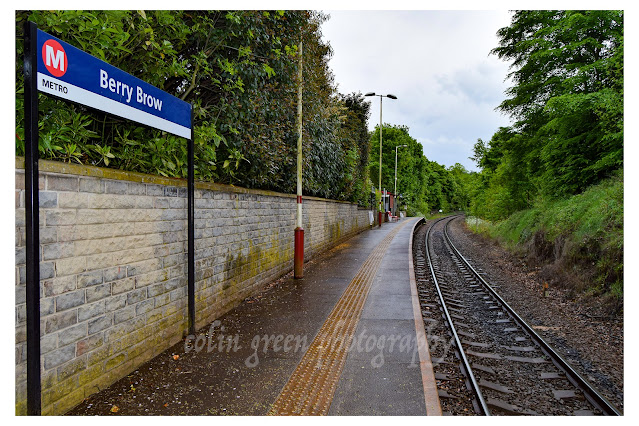The Halifax High Level Railway, a testament to Victorian engineering ambition, once carved a dramatic path across the Halifax landscape. Originally conceived as part of a grand scheme by the Hull and Barnsley Railway to link Holmfield with Huddersfield and beyond, and culminating in a grand new central station at George Square, Halifax, the project ultimately fell short of its initial vision. Though construction began in 1884, the ambitious plan was abandoned just two years later. The line, however, did open to Halifax St. Paul's Station on September 5th, 1890, a truncated version of the original dream.
The construction of the High Level Railway was a significant feat of engineering. The line boasted a 740-metre tunnel, the impressive 10-arch Wheatley Viaduct, and substantial cuttings on either side of the tunnel. Large goods yards at Pellon and St. Paul's stations further underscored the scale of the undertaking.
Despite the impressive infrastructure, the High Level Railway never captured the hearts of local passengers. Its indirect route, often requiring a change at Holmfield Station onto the Queensbury Line to reach the center of Halifax, proved inconvenient. The line's true calling became freight transport, serving the numerous mills that dotted the northern and western reaches of Halifax. Passenger services were withdrawn in 1916, a mere 26 years after opening, and the line was quickly singled, with signaling removed. Freight traffic continued to rumble along the High Level until June 27th, 1960, before finally succumbing to changing economic realities.
Today, the remnants of this once-bustling railway offer a glimpse into a bygone era. The Wheatley Viaduct still stands, a majestic, if now inaccessible and abandoned, monument to Victorian ingenuity. The Wheatley Tunnel also remains, although its eastern portal has been filled in, and a housing estate now occupies the land above. Further along the route, Wood Lane, Brackenbed, and Pellon Lane bridges stand in remarkably similar condition to their operational days, bearing silent witness to the trains that once passed beneath and above them. The substantial stone-walled embankment at Pellon, too, endures, as do many of the bridges towards King Cross, though many of the latter have been infilled over time.
The echoes of the High Level Railway can still be found in the modern landscape. The site of Pellon Station is now part of an industrial estate known as High Level Way, a subtle nod to the area's past. The grand Halifax St. Paul's Station, once a gateway to the town, has been transformed into a retail park, erasing almost all traces of its railway heritage. For many years, a car dealership and petrol station occupied the site, but recent redevelopment has further reshaped the landscape. While the High Level Railway may be gone, its legacy, both visible and hidden, continues to shape the character of Halifax.
These pictures were taken over two weekends in February 2014 using a Polaroid IS2132 bridge camera. Clicking any image should open a link in another window to my Colin Green photography store on Zazzle.
Wheatley Tunnel entrance, the other side has been infilled and a housing estate built upon it
Wheatley Viaduct, the Maltings building can be seen beyond, once part of Webster's Brewery
Keighley Road Bridge, Wheatley Tunnel used to exit close to here, the large cutting has now been infilled and houses built upon it






























































